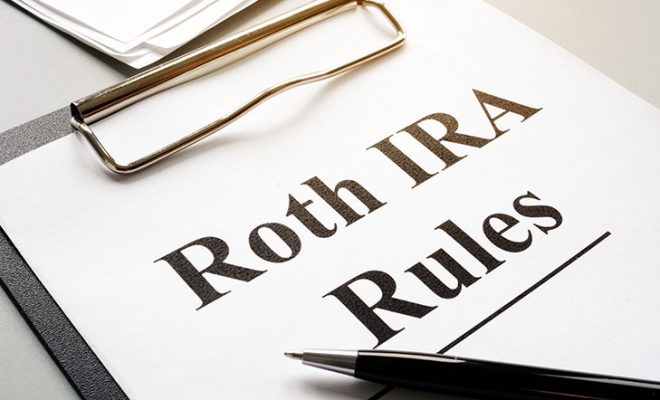Smart Ways to Save for Retirement in Your 50s

Saving for retirement after 50 may feel overwhelming, but these years can be important for closing any gaps in your savings. For many people, the 50s are all about stability, therefore these years are marked by more professional balance, fewer financial commitments, and a greater willingness to save and secure your financial future. So, if you are wondering if 50 is too late to save for retirement, the answer is no. You can still do a lot.
A financial advisor can help you make the right choices to help you save for retirement in your 50s. This article will also provide you with some tips on smartly saving for your retirement.
Below are four tips for saving in your 50s:
1. Take advantage of catch-up contributions on your 401(k)
If you are wondering how to catch up on retirement savings in your 50s, taking advantage of catch-up contributions can be one of the most effective ways to set yourself up for a financially secure future. Once you reach age 50, you are allowed to make additional contributions to employer-sponsored retirement accounts, like 401(k)s, beyond the standard limits.
As of 2024, this catch-up limit allows you to contribute an extra $7,500 annually to a 401(k). This option can help you supercharge your retirement fund even with only a decade left to retire. One of the key advantages of catch-up contributions is the power of compound growth. Compounding accelerates your account’s growth over time and helps you substantially increase your future distributions. The earlier you start contributing extra, the longer these contributions have to grow. So, you must make sure to start using these catch-up contributions as soon as you turn 50. Catch-up contributions to 401(k) offer another significant advantage. When you make catch-up contributions, it is not just about adding $7,500 extra annually. In many cases, your employer may match a portion of your contributions, which could add a significant amount to your retirement balance without any additional cost to you. For every dollar you contribute, your employer might match a certain percentage. So, when you maximize your contributions, you also end up getting a higher match, which can further grow your retirement savings. Additionally, catch-up contributions to a traditional 401(k) reduce your taxable income for the year and help lower your tax bill while helping you save more effectively.
To see how impactful this can be, consider this example:
If you start making catch-up contributions of $7,500 annually at age 50 and continue for 12 years until retirement (assuming you retire at 62), you will contribute a total of $90,000 just in catch-up contributions. Now, if your employer matches 50% of each dollar you contribute, you will receive an additional $45,000 over that period, resulting in a combined total of $135,000 in contributions. Now, contributing $7,500 annually may seem like a big commitment at first, but it is approximately $625 per month when broken down. This can be a more manageable goal. You can also consider automating your contributions to ensure that you consistently reach your target. Alternatively, you can also make larger contributions when possible, such as after a bonus or during months when your overall expenses are lower. Planning how and when you make these extra contributions is essential. At the end of the day, you must come up with something that you can sustainably follow in the years to come.
2. Consider opening an Individual Retirement Account (IRA)
If you do not own an Individual Retirement Account (IRA) alongside your 401(k), now is an excellent time to consider opening one. IRAs help to diversify your retirement savings and help you manage your taxes more effectively. Many people rely solely on their 401(k) or similar employer-sponsored plans. Even if you have other investment accounts, an IRA can still be a good addition for tax planning and flexibility. One of the primary advantages of a Roth IRA is its tax-free growth and withdrawals in retirement. Unlike a traditional 401(k), which provides a tax deduction now but is taxed upon withdrawal, a Roth IRA allows you to withdraw contributions and earnings tax-free in retirement. So, you are essentially planning your future tax strategy by creating an account that will not incur taxes later. Opening an IRA can also offer an excellent diversification opportunity beyond your employer’s 401(k) plan. Many employer-sponsored plans are heavily invested in company stock or have limited investment options, which can increase the concentration risk in your portfolio. With an IRA, you have complete control over where your money goes, and you can choose from a wide array of investments, such as index or mutual funds, bonds, individual stocks from other companies, etc. You can build a portfolio tailored to your specific risk tolerance, time horizon, and retirement goals rather than being restricted to the options available in your 401(k).
In 2024, individuals aged 50 or older can contribute up to $30,500 to a 401(k), while the Roth IRA contribution limit is capped at $8,000. This may seem modest in comparison, but the lower cap is more achievable and given that the Roth IRA provides unmatched benefits in retirement, this can be a viable retirement saving strategy. Another advantage of the Roth IRA is its lack of Required Minimum Distributions (RMDs) during your lifetime. With a traditional 401(k) or IRA, you are required to start taking distributions at a certain age, which can push you into a higher tax bracket. A Roth IRA, however, does not have RMDs and allows you to keep funds growing in the account if you do not need them right away. This feature also means you could potentially leave a tax-free inheritance for your heirs, who would inherit the account after you.
If you are just starting out, you can contribute gradually to an IRA, even if it is only a small amount each month. Over time, these contributions can build up, mainly thanks to the power of compounding. And if you have extra income from a bonus or any other source, you can consider directing some of it into an IRA in a lump sum. This can be a simple way to take advantage of the IRA’s benefits without disrupting your other financial commitments. Another option can be to allocate a portion of your overall retirement savings to an IRA rather than putting all of it into a 401(k). For example, if you are maximizing your employer match in your 401(k), you might direct any additional retirement savings toward an IRA for its tax advantages and greater portfolio control. This can also be a way to achieve a more balanced investment approach if your 401(k) is heavily invested toward company stock or if you would like exposure to other asset classes that your employer’s plan does not offer. An IRA provides autonomy over your investment choices, so you are not bound by the rules of your employer’s plan.
If you are interested in a Roth IRA but do not want to open a new account, you might consider converting some of your existing 401(k) or traditional IRA funds to a Roth IRA. This process is known as a Roth conversion and can be done gradually to help balance your tax situation over time. However, when converting to a Roth IRA, you must keep in mind that you will need to pay taxes on the amount you convert. This tax liability in the year of conversion can be significant, so it is essential to weigh the short-term tax cost against the long-term benefits and then make a decision. You can consult a financial advisor before you convert your funds.
SPONSORED WISERADVISOR
3. Avoid debt so you can save more
If you are saving for retirement after 50, you must avoid taking on new debt to free up funds. Taking on debt can eat into your finances with interest payments and create more obligations when you ideally want to reduce them. Instead of debt, you need to prioritize saving more during this decade of your life. For example, minimizing your credit card usage can reduce interest payments. Every dollar saved on interest can go directly into your savings.
For example, downsizing can be a brilliant way to lower your debts. Maintaining a large home may no longer make sense, with your children likely grown up and out of the house. Moving to a smaller home will allow you to lower your mortgage payments, property taxes, maintenance responsibilities, and utility costs. You can also avoid the added costs that come with a larger space, such as more furniture, utensils, curtains, etc., which often lead to unnecessary spending and upgrades over the years. Downsizing removes the temptation to accumulate items you may not need and creates a more streamlined lifestyle. The extra savings that you accumulate by lowering your expenses can be redirected into retirement accounts, emergency funds, healthcare accounts, or other long-term investments. When you have fewer financial obligations, you are less reliant on your credit cards or other forms of debt to cover your day-to-day costs. Additionally, reducing debt and expenses can help create a simpler lifestyle, which reduces financial stress as you near retirement.
4. Get your healthcare planning in order by using the right financial products
As you approach retirement, it is essential to start thinking about how you will handle your healthcare needs. In your 50s, you may already be seeing the doctor more often, and as you get older, these visits are likely to increase. Planning ahead for healthcare costs can help you avoid financial stress down the road.
If you have a High-Deductible Health Plan (HDHP), opening a Health Savings Account (HSA) might be a good idea. This type of account allows you to save for medical expenses in a tax-efficient way. However, to be eligible for an HSA, your HDHP needs to meet specific requirements set by the Internal Revenue Service (IRS). For 2024, these include a minimum deductible of $1,600 for individual coverage or $3,200 for family coverage. Additionally, your plan’s out-of-pocket costs cannot exceed $8,050 for an individual or $16,100 for a family. If your plan fits these requirements, an HSA can be a great way to save for future medical expenses. Many employers offer HSAs, but you can set one up through most banks or financial institutions, even if yours does not. The contributions you make to an HSA are tax-deductible, and the money inside grows tax-free. So, the compounded returns can be used to cover your medical costs as you age without having to worry about taxes. HSAs are also very flexible in terms of use. Once you turn 65, you can withdraw funds for any purpose without any penalties. However, if it is for something other than qualified medical expenses, you will pay taxes on the amount. But if you use the funds for medical costs, they remain tax-free. For 2024, the contribution limits are $4,150 for individual plans and $8,300 for family plans. And if you are 55 or older, you can make an additional $1,000 catch-up contribution.
It is also essential to consider what healthcare coverage you will have once you retire. Employer-sponsored health insurance will not be available once you leave the workforce, so you will need to explore other options. If you plan to retire early, healthcare becomes an even bigger consideration, especially if you have a spouse who will also need coverage. l. Another option you may want to look into is long-term care insurance. This type of insurance helps cover the cost of extended medical care, including services like nursing homes or assisted living, which can be very expensive. Without enough savings to cover these costs, long-term care insurance can provide much-needed peace of mind and protect your finances.
To conclude
These retirement saving tips for your 50s can help you work toward achieving your financial goals and bridge any gaps in your savings before retirement. However, since you are getting closer to retirement, it is advised that you consult a financial advisor. A financial advisor can help you create and stick to a personalized strategy that is tailored to your specific needs and goals. This can ensure that you make the most of your remaining working years while avoiding common pitfalls that can derail your progress.
Use the free advisor match tool to get matched with 2-3 financial advisors who can recommend suitable strategies to save for retirement in your 50s. Answer some simple questions about your financial needs and get matched with 2 to 3 advisors who can best fulfill your financial requirements.
For further information on creating a suitable retirement plan for your unique financial requirements, visit Dash Investments or email me directly at dash@dashinvestments.com.
About Dash Investments
Dash Investments is privately owned by Jonathan Dash and is an independent investment advisory firm, managing private client accounts for individuals and families across America. As a Registered Investment Advisor (RIA) firm with the SEC, they are fiduciaries who put clients’ interests ahead of everything else.
Dash Investments offers a full range of investment advisory and financial services, which are tailored to each client’s unique needs providing institutional-caliber money management services that are based upon a solid, proven research approach. Additionally, each client receives comprehensive financial planning to ensure they are moving toward their financial goals.
CEO & Chief Investment Officer Jonathan Dash has been covered in major business publications such as Barron’s, The Wall Street Journal, and The New York Times as a leader in the investment industry with a track record of creating value for his firm’s clients.











